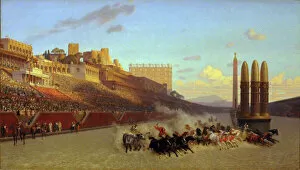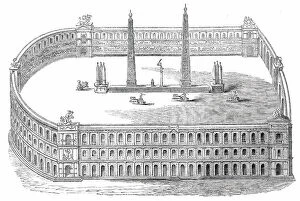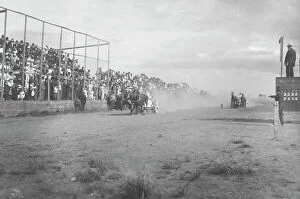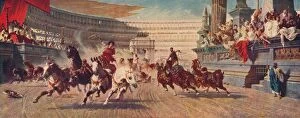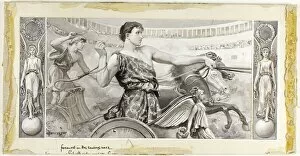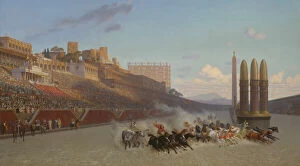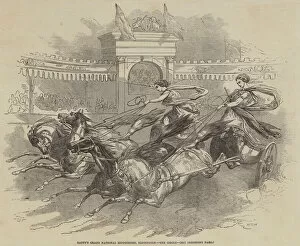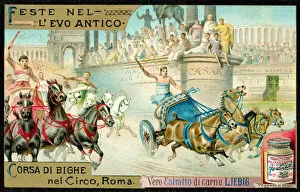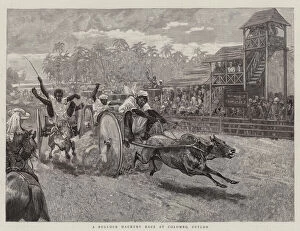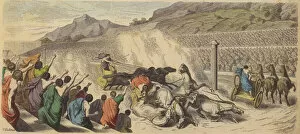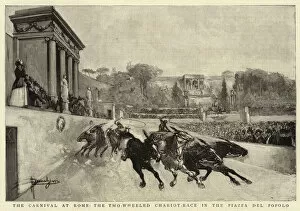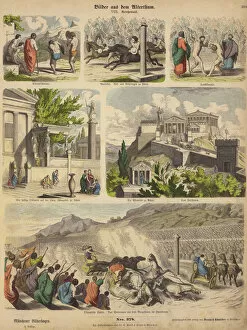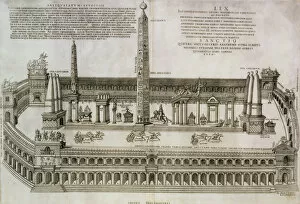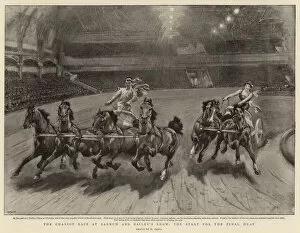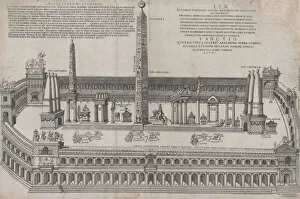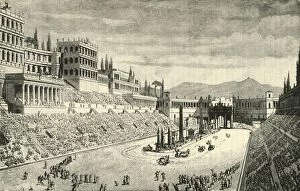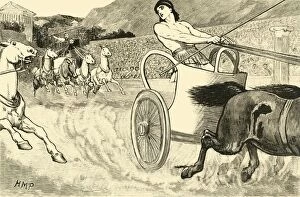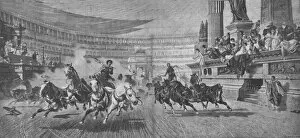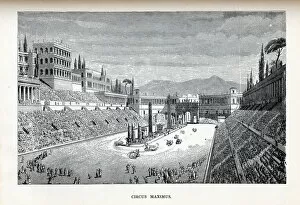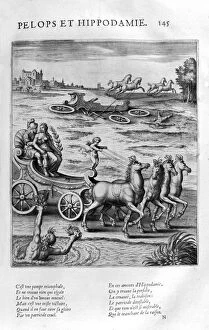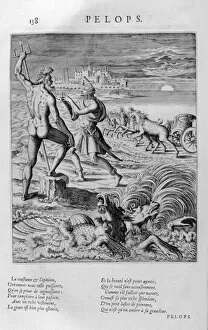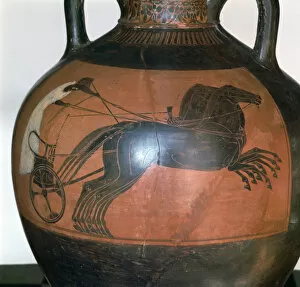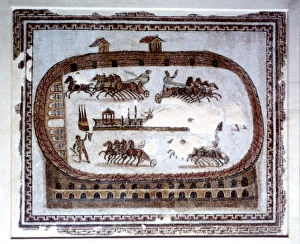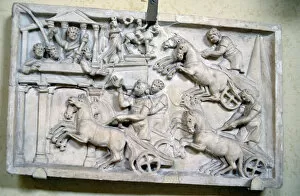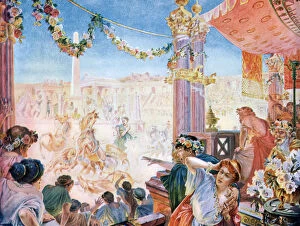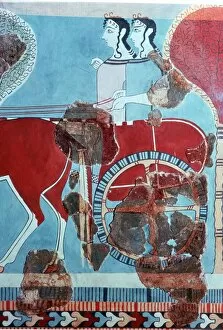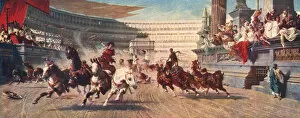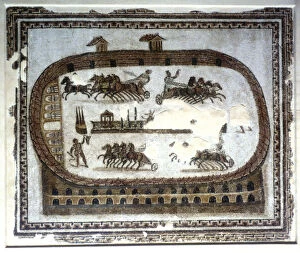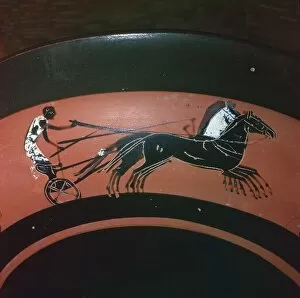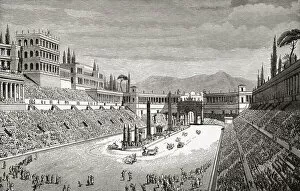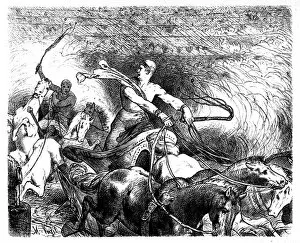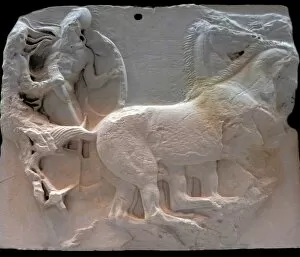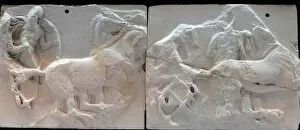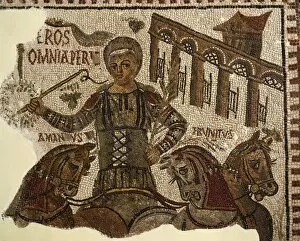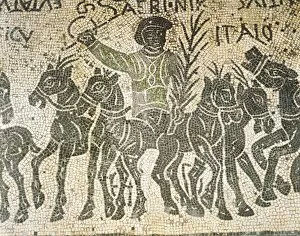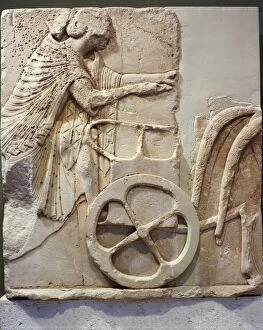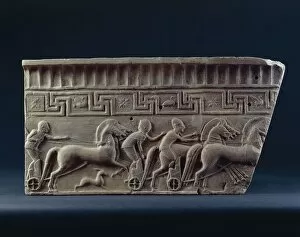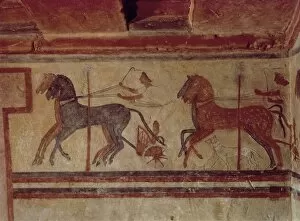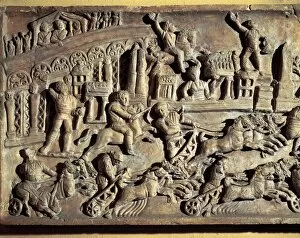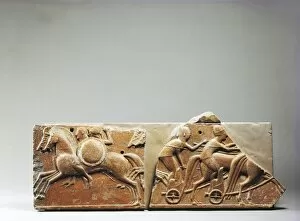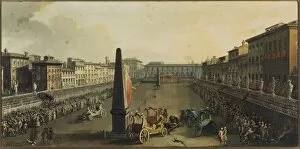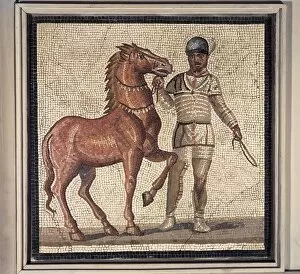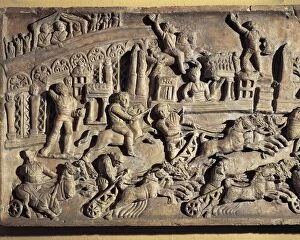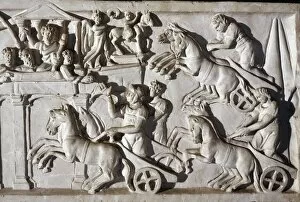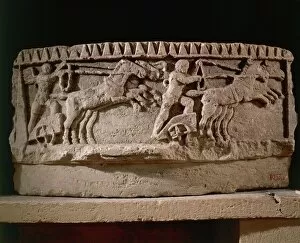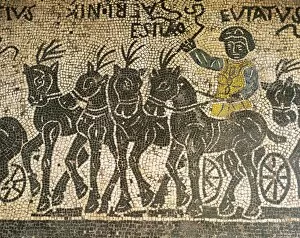Chariot Racing Collection
"Thrilling Chariot Racing: A Glimpse into Ancient Spectacles" Step back in time and immerse yourself in the exhilarating world of chariot racing
For sale as Licensed Images
Choose your image, Select your licence and Download the media
"Thrilling Chariot Racing: A Glimpse into Ancient Spectacles" Step back in time and immerse yourself in the exhilarating world of chariot racing, a beloved sport that captivated audiences for centuries. From the grandeur of the Circus Maximus to the heart-pounding races depicted by talented artists like Gerome and Wagner, these captivating images bring to life an era filled with adrenaline-fueled competition. In Jean-Leon Gerome's masterpiece "A Roman Chariot Race, " witness the intensity as skilled charioteers maneuver their steeds around treacherous turns, vying for victory amidst roaring crowds. Alexander von Wagner's "Foremost in the Envious Race" transports us to another thrilling moment, where competitors push their limits on a racecourse steeped in history. But it wasn't just Rome that reveled in this spectacle; across continents and cultures, chariot racing left its mark. In Will H. Low's painting "Chariot Race, " we are transported to an entirely different setting - Battys Grand National Hippodrome in Kensington - where daring racers test their mettle against each other. The allure extended beyond ancient times too. Explore Ceylon through an engraving depicting a Bullock Hackery Race at Colombo or marvel at a relief from 520 BC showcasing a racer atop his majestic chariot carved meticulously out of marble. Ancient Greece also played host to this electrifying sport, as shown vividly in coloured engravings capturing intense moments during Olympic Games' chariot races. The Carnival at Rome comes alive through an engraving showcasing two-wheeled Chariot-Race held within Piazza del Popolo – a testament to how this tradition transcended borders and enthralled people far and wide. To truly appreciate these historical spectacles, delve deeper into plans such as "Plan of the Circus Maximus, Rome, " engraved by an artist in 1552.

